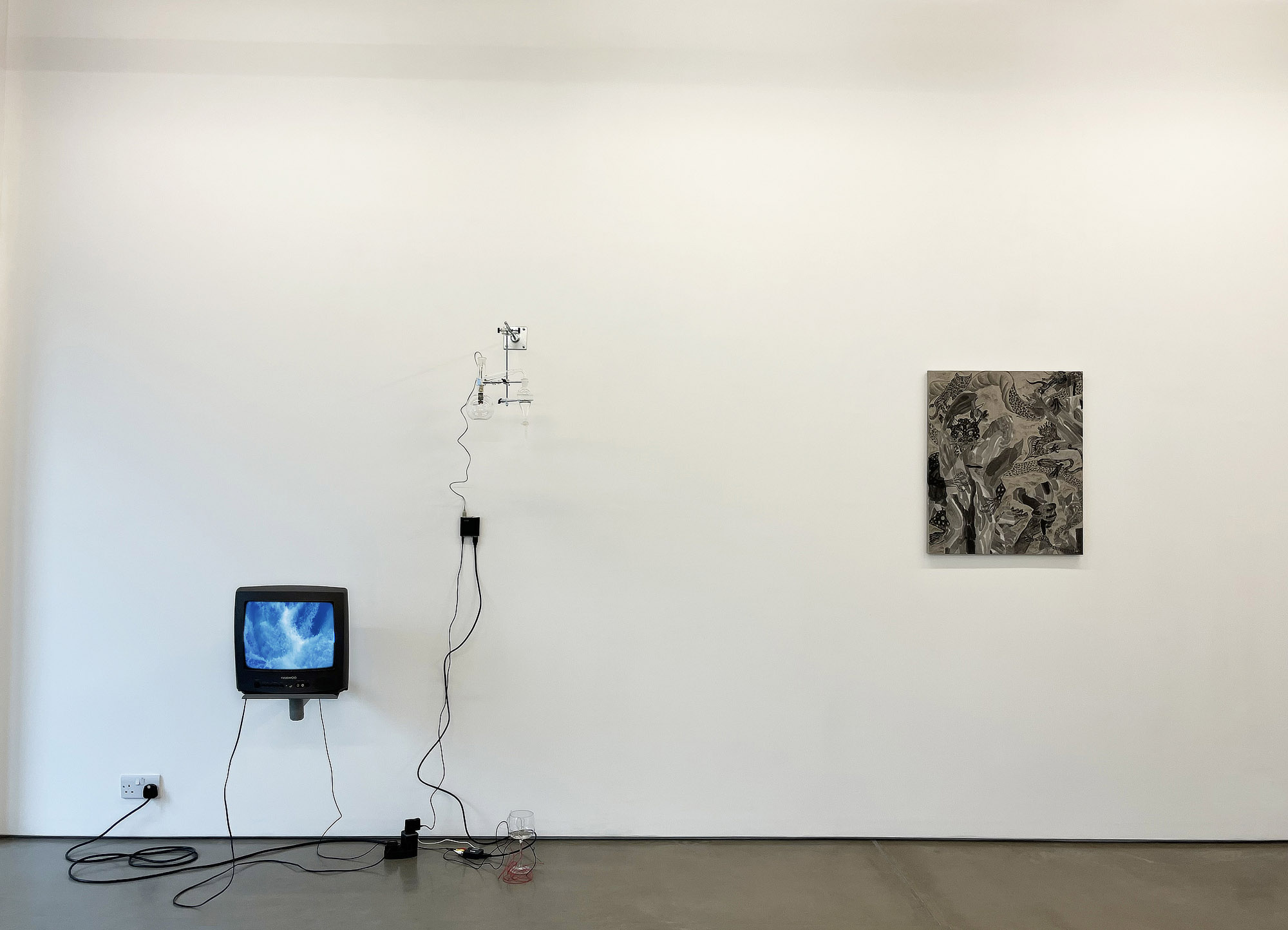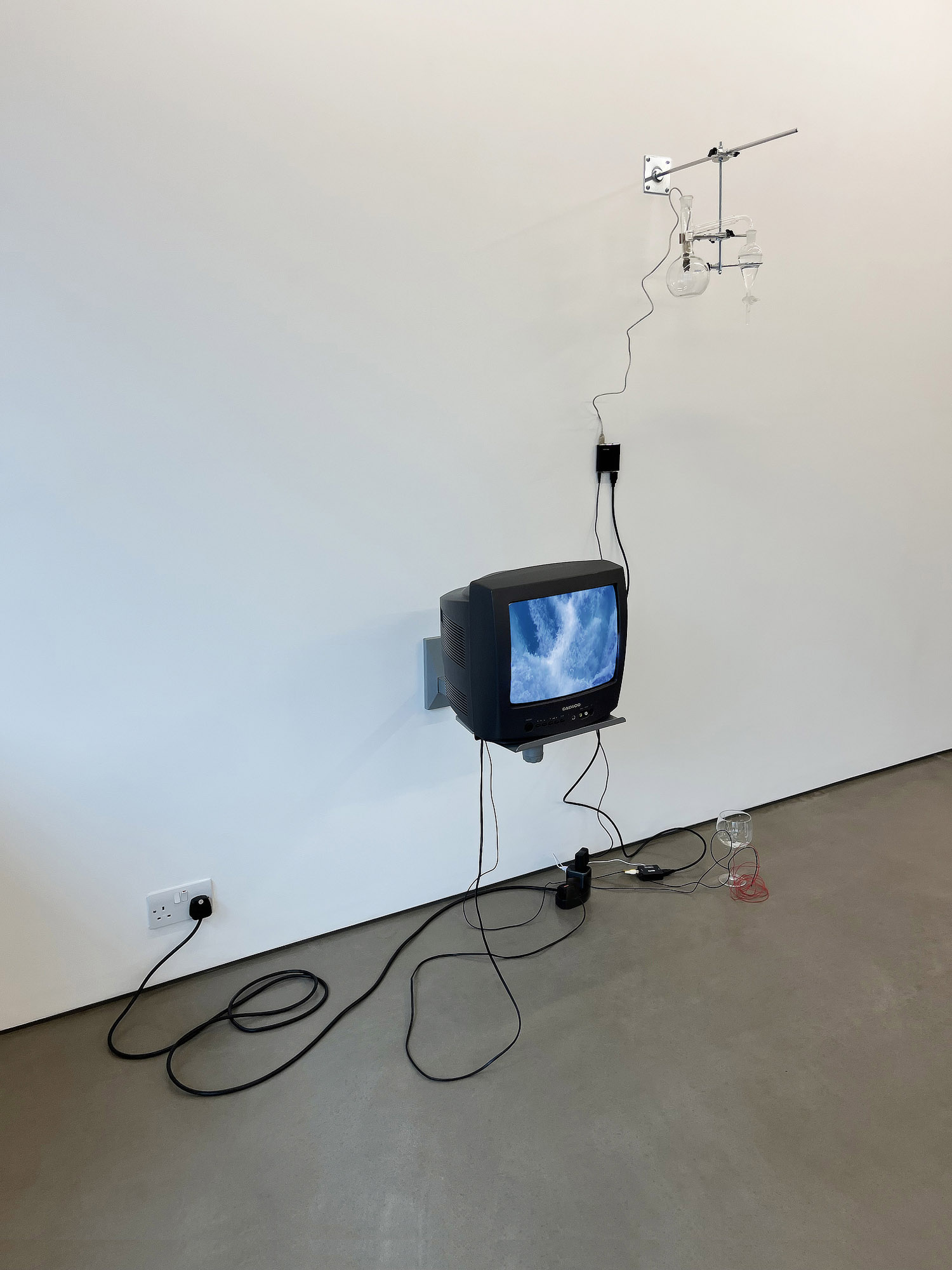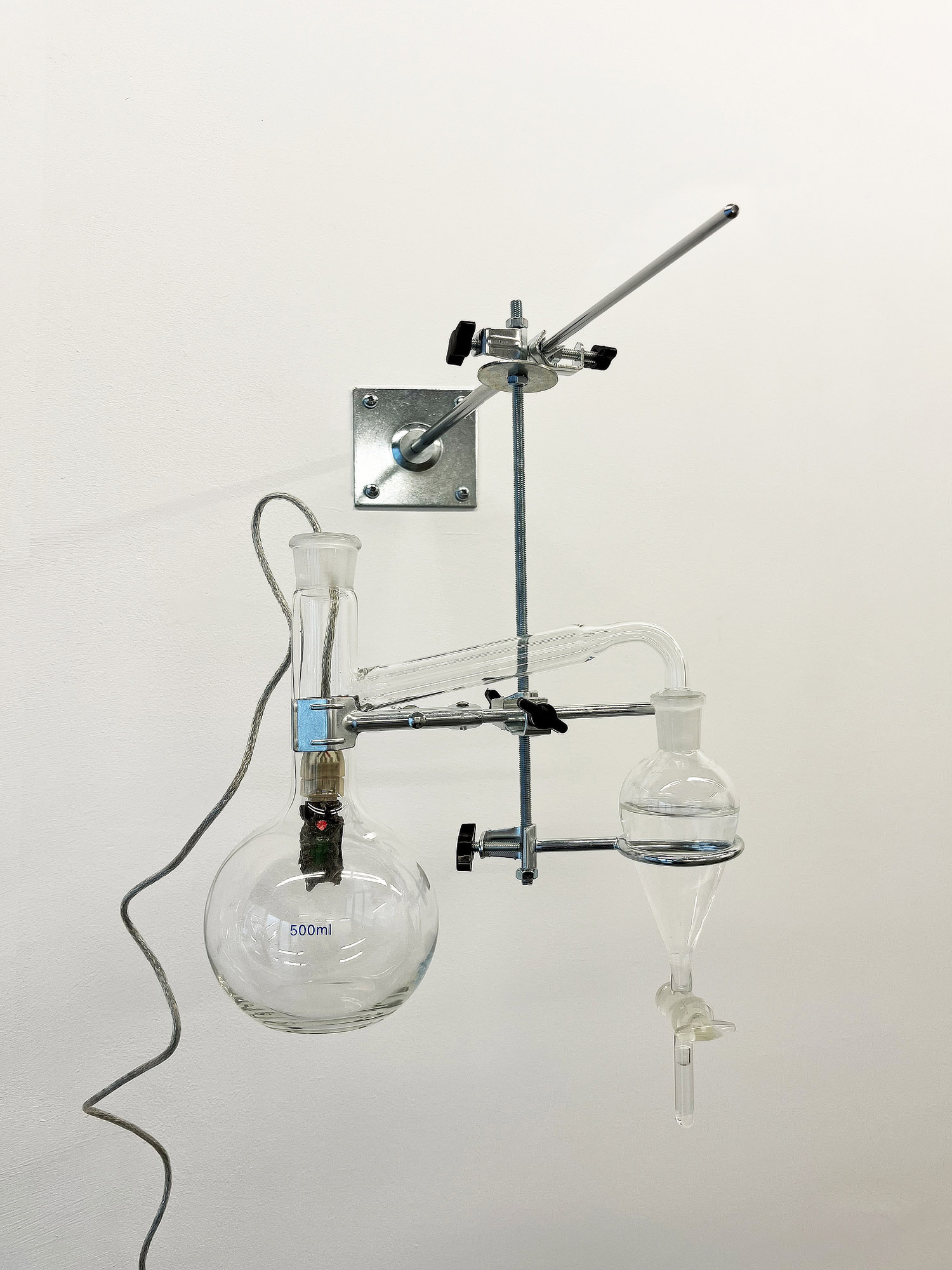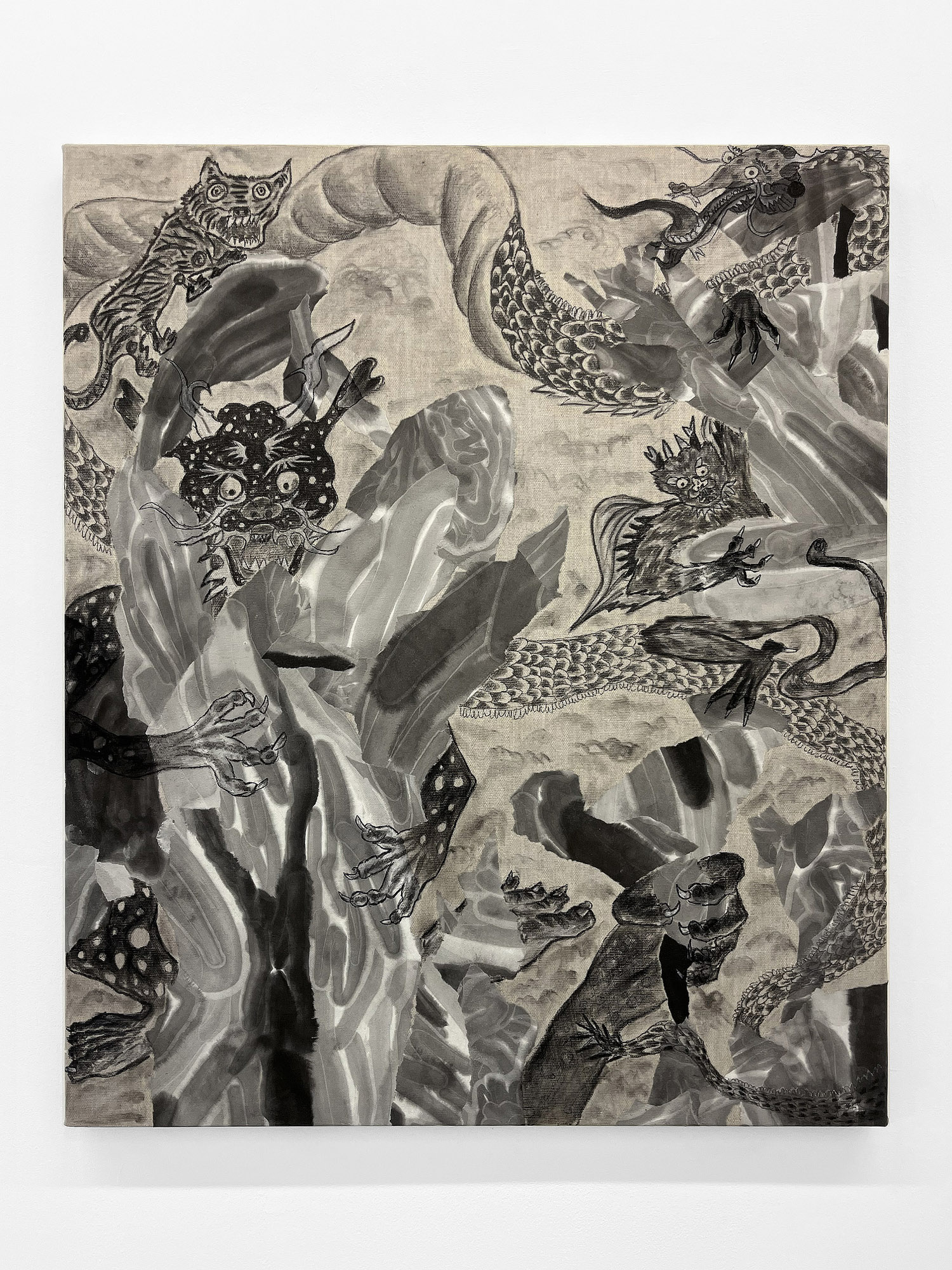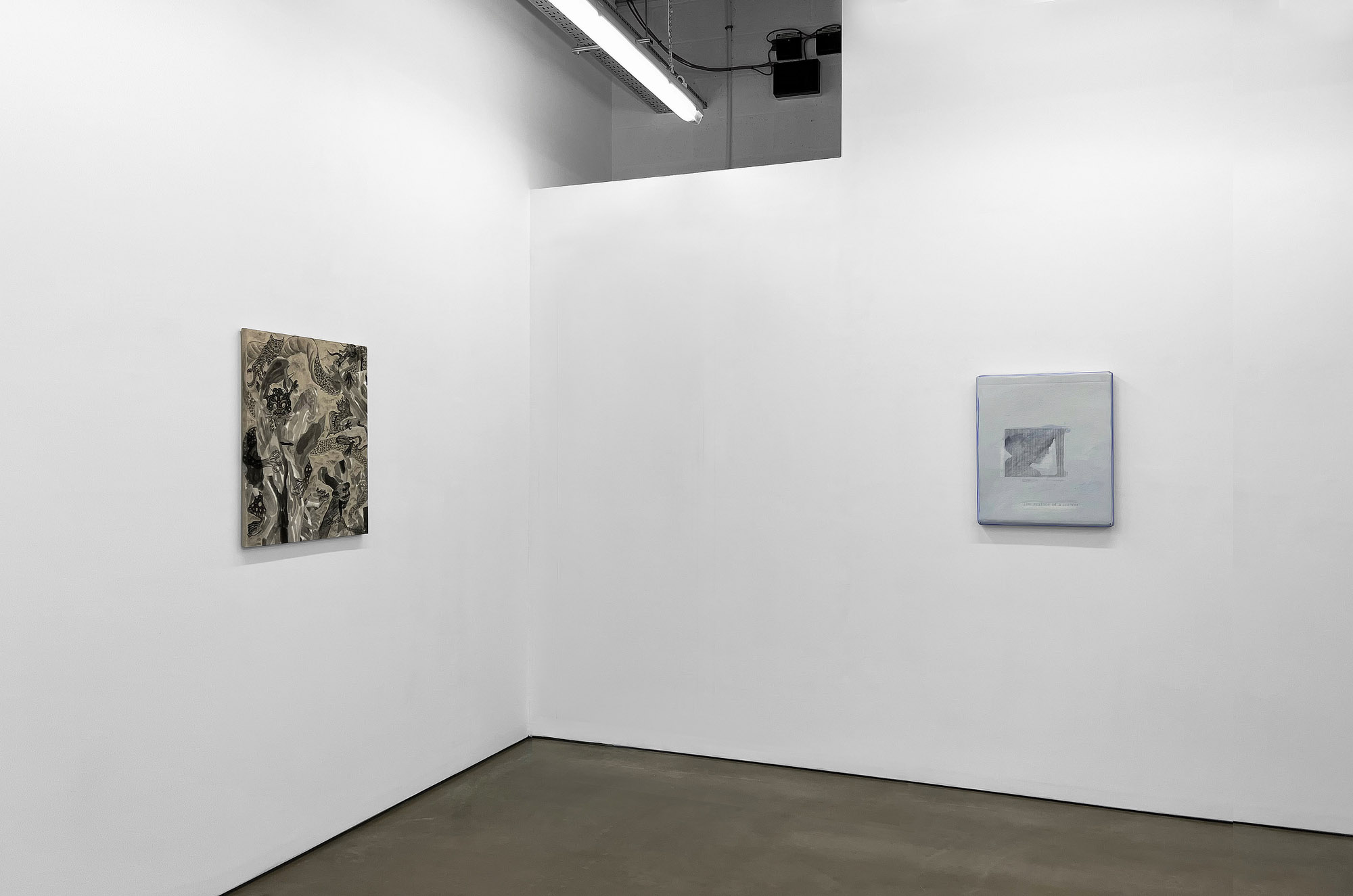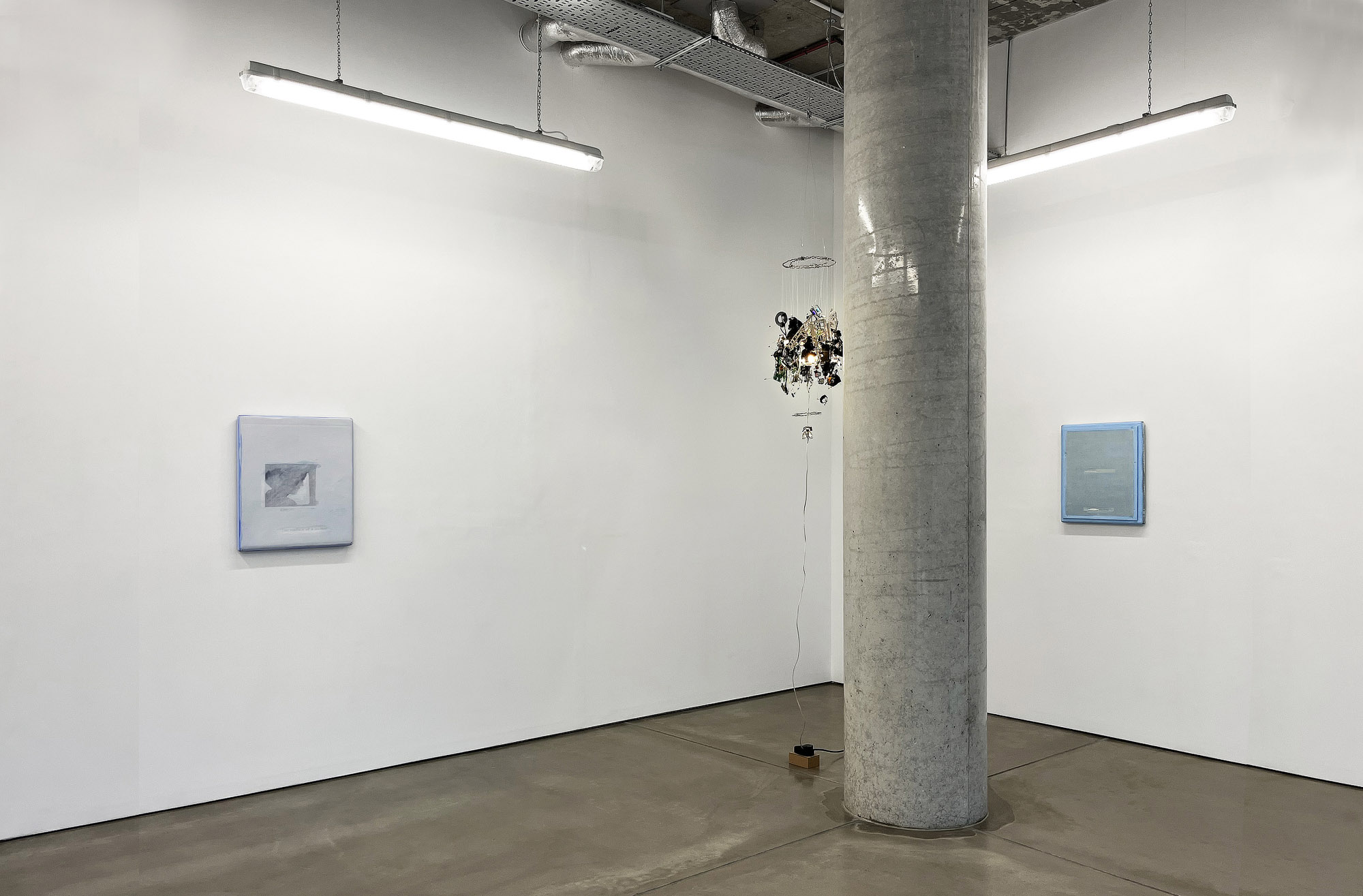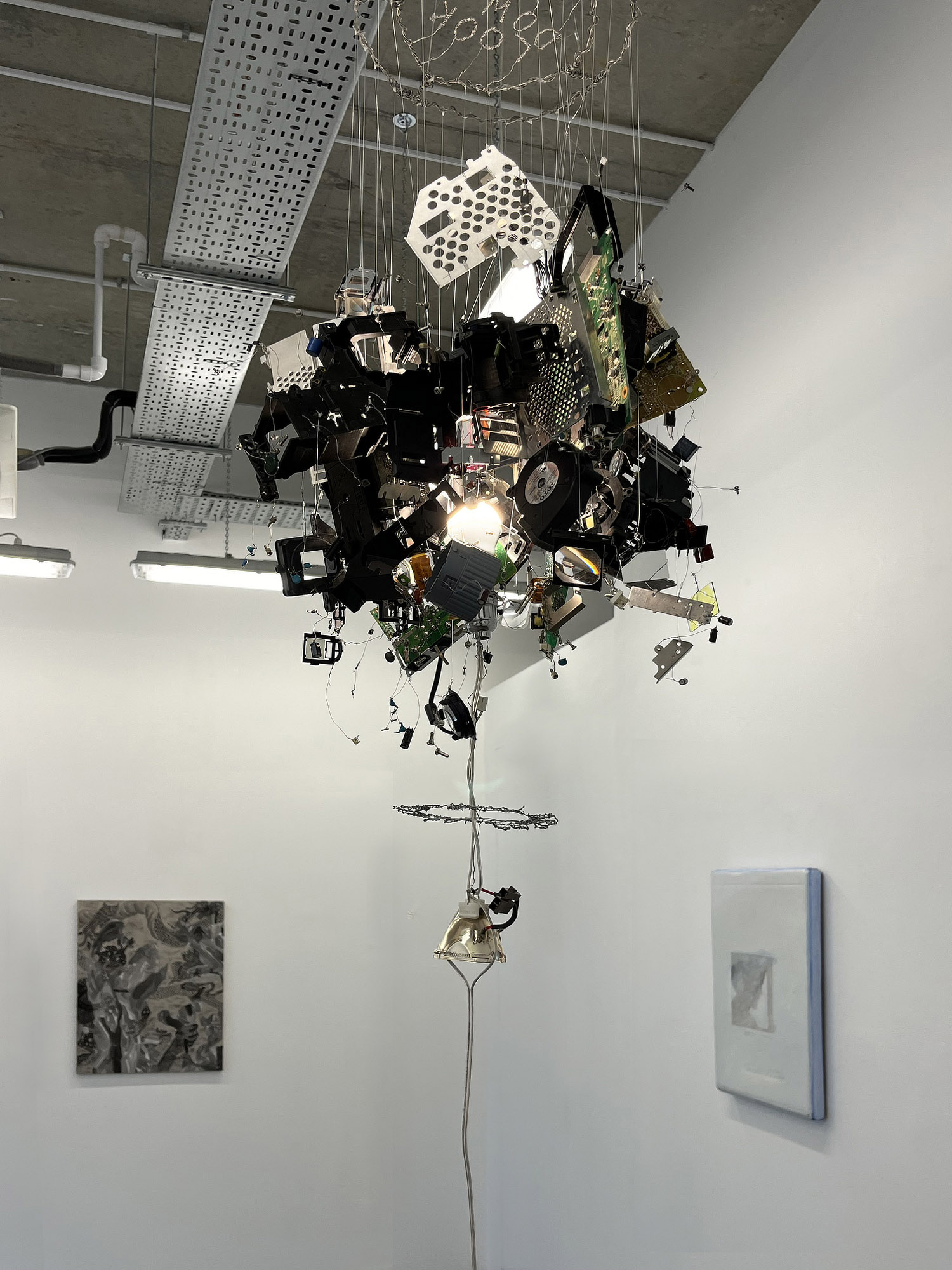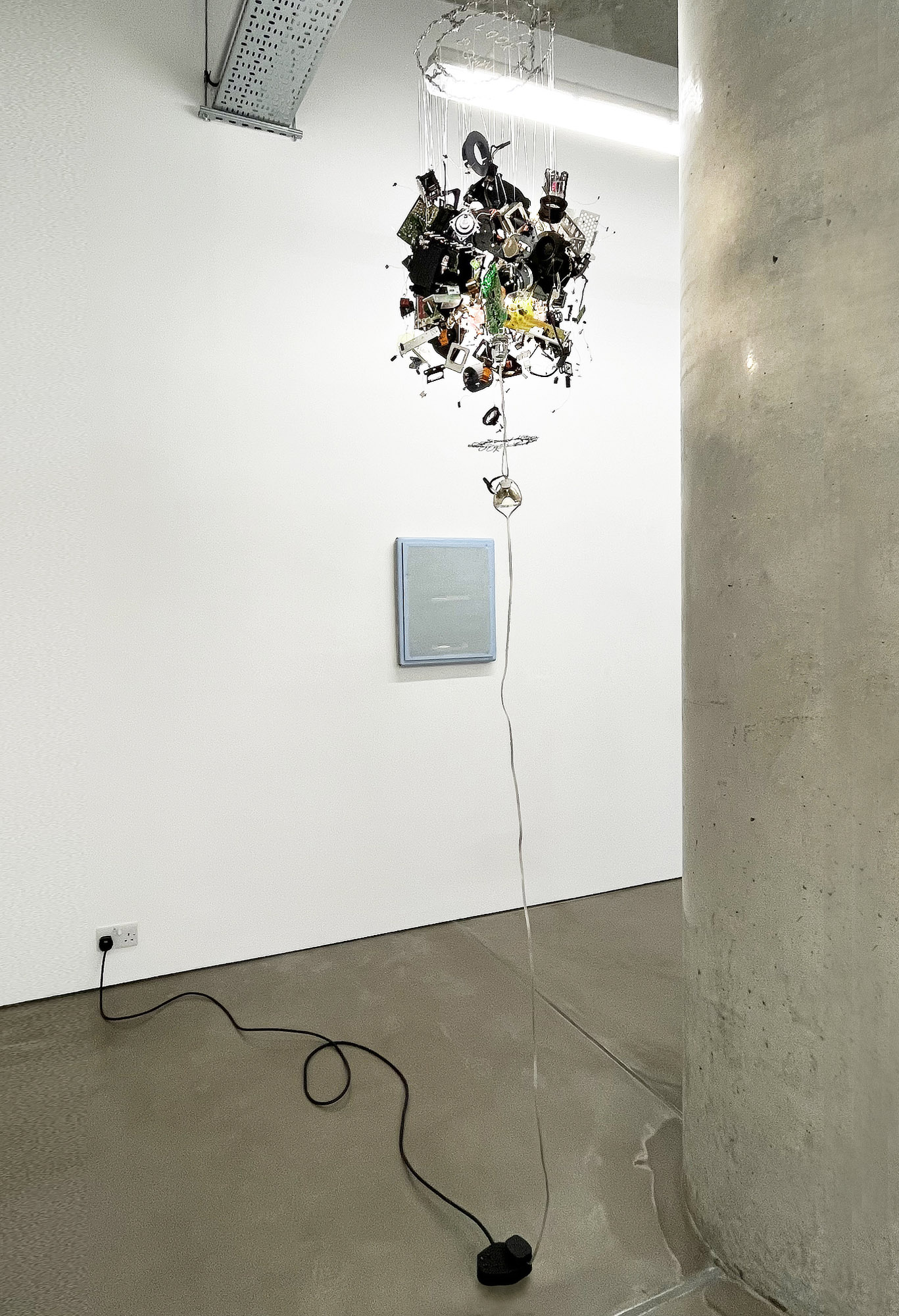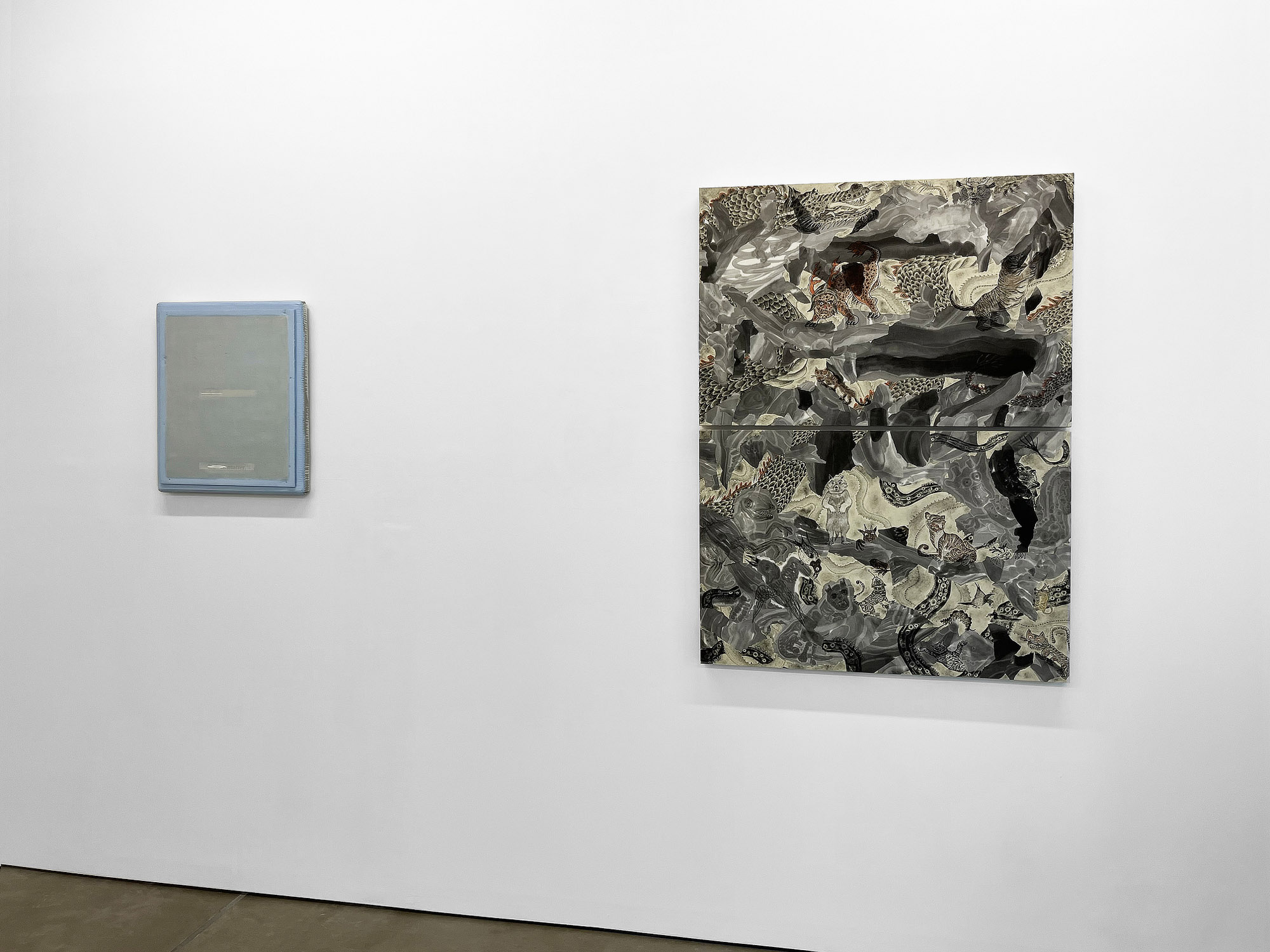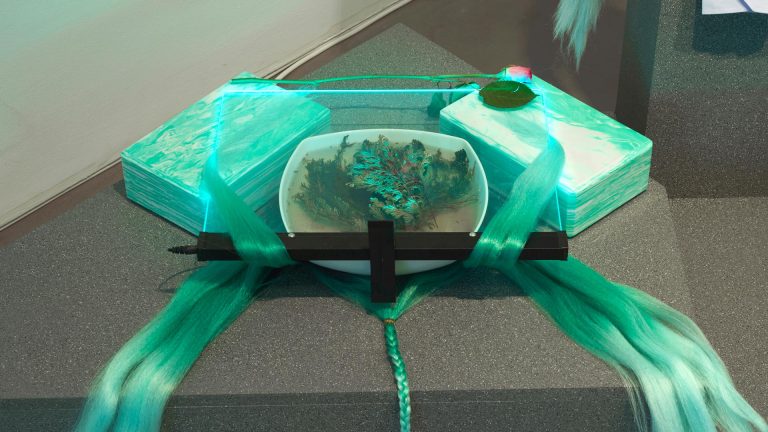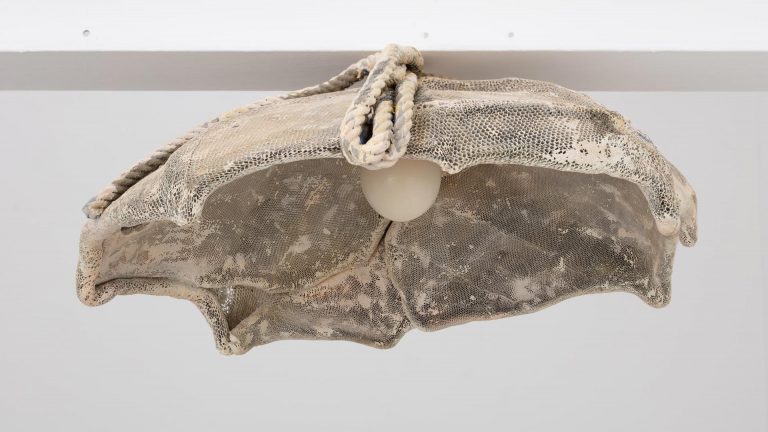Artists: Lee Kit, Yewon Lee, Karyn Nakamura
Exhibition title: The surface of a mirror
Venue: mother’s tankstation, London, UK
Date: March 14 – April 20, 2024
Photography: all images copyright and courtesy of the artist and mother’s tankstation
The remarkably handsome and enigmatic Jean Marais lies asleep/unconscious beside, and is reflected within, a sandy, muddied pool. Jean Cocteau, Marais’ lover and mentor took the tender publicity shot in 1949 for his cinematic masterpiece, Orphée, an irrepressible image that re-surfaced on The Smith’s equally classic 1983 7” vinyl, ‘This Charming Man’[i]. Clunk, scratch, hiss: The guitars jangle into life and the equally enigmatic and uniformly laconic Morrissey hits the front… The mere mention of which, for a particular demographic, instantly triggers the power of a synaptic YouTube broadcast: “I would go out tonight,… but I haven’t got a stitch to wear…” I guess that’s what societal mirrors do (oh God…the king is naked!).
With a gust of wind, Marais’ image ripples, glitches and Orphée is left alone in the compound mud of the ‘real’ world. Cocteau wrote of the film: “Orphée is a realistic film: or, to be more precise, observing Goethe’s distinction between reality and truth, a film in which I express a truth particular [my emphasis] to myself”.[ii]
With touch, a reflection in water reveals itself volatile, a truth particular to self, fragile; similarly, with water inkstone becomes fluid. Becomes a brushstroke, becomes Yewon Lee’s collage of ‘indefinable creatures’, a reflection not of a still object or person suspended in glass, but of all the cultural ripples and swimmings of a fluid consciousness. A bird with a worm. The hunter and the hunted. Creatures raging and creatures calm, caught and folded between abstract, watery brushstroke marks. A flow of greys and peeps of colour, a comic-fearsome tiger straight out of a minhwa[iii] painting and a teddy-bear-type cuddly rodent – go figure: Yewon Lee, a young Seoul artist employing traditional techniques in an irregular manner, rediscovering both heritage and themselves in London. Lee writes: “There is a difference between my identity defined and stipulated in Korea compared to London … my identity, by which I define myself, is shape-shifting”.[iv] Lee’s ‘truth particular’ comes as an introspective fluid pool of action, in which the self refracts different shades of meaning and emotion with each passing moment. A monochrome-esque dune-scape of mutation, Orphée struggles as passing through liquid glass.
Intended as unseen, backs of ancient Chinese mirrors held etchings of the cosmos – the divinities that make and meld the universe with all its beings. One inscription reads: the bright mirror, which reflects the figure, knows people’s feelings.[v] The mirror’s enigma, all surface, glass, metal, paper-thin. Yet infinite, producing depth upon depth. Measuring up to it, the self seems at once far too expansive to be summed up neatly on so flimsy a material, and far too insignificant to be found among its endless translucent depths …“I would go out tonight…”
Karyn Nakamura’s extraordinary installation and performances, in the clothes of science – temet nosce – at MIT, Boston, find a way through the fabled fabric of things, towards the abstruse, removed, truth of art. Hard surfaces of redundant realities (obsolete equipment) dissolve into their own lack of purpose. Monitors, wires, tanks of water – water and electrics, argh! At MIT one unwitting spectator exclaimed ‘oh God, that’s me’, as campus CCTV footage flits and splutters on one of Nakamura’s screens.[vi] The pang of the moment is the recognition of a self, not as it stands whole, autonomous – its own prized possession – but of a self among the throes of other people. So that is how I am seen when I am no longer looking at myself. The king doesn’t have a stitch to wear… An untitled Nakamura video sculpture shares liquids through distillation flasks, dropping clear fluid onto a severed video cable balanced in a wine glass on the floor. A momentary flicker of electrical recognition causes a glitchedmessage, akin to the reflex of the synaptic jukebox, to appear on a Jurassic CRT monitor. A small miracle of retro-action.
To turn from the mirror and acknowledge that the image spookily remains, living-on independently, Lee Kit transfers inkjet prints from the pretence of reality, creating a mirror image onto the ‘permanence’ of cardboard paintings. Snippets of texts accompany, often from the synaptic cannon of pop lyrics; the trashier the better (according to Lee Kit), yet sounding like philosophic pronouncement. Silhouettes and shapes of figures caught between the transience of air and temporary permanence of their own self/reflections. In a memorable work from 2015, Portrait of a boy, a 4×3 format of pale filmic blue projected light falls over a crumpled paper-transfer-painting of an enigmatic young man. The viewer reads Lee Kit’s imprint as perhaps a martyred politician, a lost leader, a figurehead of faith? A personal reality (?)… In fact, the “boy” is an anonymous model from an in-flight magazine. An accompanying broken light fitting emanates no light, a cupboard door has no cupboard, but idly rests on the floor. “Life is what you make it”. (More philosophical pop[vii]). Layers on layers, cardboard stretched over a frame like a canvas, its seeming-infinite dimples exposed: segments of societal materials withdrawn, slowed-down, offering pause for reflection. As if the palest and most everyday of images – and the quietest of pauses – might flash up in a moment of profound recognition.
In the 2018 Lee Kit painting, The surface of a mirror, from which the exhibition takes its title, the face of a figure appears fleetingly silhouetted against what might be a window frame, a stranger on a train? Distance is good, change of focal length alters perception: Life is better in Taipei. I’m able to have a clear mind looking at Hong Kong from a certain distance. I don’t have to get mad about everything that’s happening in Hong Kong; not just in the art scene, but the society in general.[viii]
A mirror distances, shows the I to be another[ix] “…without a stitch to wear”
[i] Look that one up on eBay (Mint condition) This Charming Man, 1984, Lyrics: Johnny Marr/Steven Morrissey. Ó Universal Music Publishing, Inc.
[ii] Jean Cocteau (1889-1963) poet, novelist, playwright, artist, impresario, dandy, socialite …
Published posthumously, ‘The Art of Cinema’, Marion Boyars Publishers, 1992
[iii] Pendergrast, Mark, Mirror, Mirror: A History of the Human Love Affair with Reflection, United States: Basic Books, 2009
[iv] Yewon Lee’s artist statement, RCA2023, https://2023.rca.ac.uk/students/ye-won-lee/
[v] Pendergrast, Mark, Mirror, Mirror: A History of the Human Love Affair with Reflection, United States: Basic Books, 2009
[vi] ‘A Gutted Pub at MIT has Been Brought to Life as a Cybernetic Performance Site’, Boston Art Review, https://bostonartreview.com/reviews/mit-pub-performance-karyn-nakamura/
[vii] Baby, life’s what you make it / Can’t escape it / Baby, yesterday’s favourite / Don’t you hate it /
Baby life’s what you make it / Don’t back date it / Baby, don’t try to shade it / Beauty is naked /
Baby, life’s what you make it / Celebrate it / Anticipate it / Yesterday’s faded / Nothing can change it /
Life’s what you make it…
A song by the British pop band, Talk Talk, released as a single 1985, EMI – Parlophone
[viii] ‘Interview: Lee Kit’, post-ism, https://post-ism.com/2013/06/14/interview-lee-kit/
[ix] Rimbaud, letter to Paul Demeny, Charleville, 15 May 1871


